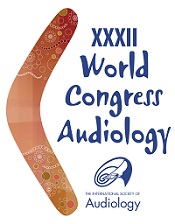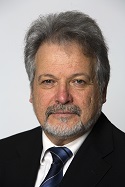 May, 2014 - Australian researchers believe a self-fitting hearing aid is a cost-effective way to bring relief to the millions of people suffering hearing loss worldwide.
May, 2014 - Australian researchers believe a self-fitting hearing aid is a cost-effective way to bring relief to the millions of people suffering hearing loss worldwide.
The need to develop a self-fitting hearing aid to help manage the hearing loss currently experienced by 360 million people worldwide is a topic up for serious discussion by international leading experts at a roundtable on the future of global hearing services in Brisbane this month.
Associate Professor Robert Cowan, HEARing Cooperative Research Centre (HEARing CRC) CEO said a self- fitting hearing aid can be used to address the lack of hearing health services providers in developing countries.
According to the latest World Health Organisation hearing loss figures, the current production of hearing aids only meets less than 10% of the current global need. About one third of these people that need them are over 65 with the majority located in south Asia, Asia-pacific and sub-Saharan Africa,” A/Prof. explained.

Robert Cowan
“One of the main barriers restricting hearing aid use in developing countries is the lack of access to services that fit and maintain them. Having an affordable, self-fitting hearing aid would reduce this barrier and provide a huge benefit to the millions of people who can currently do nothing about their hearing loss.”
The HEARing CRC has already conducted a proof of concept that has shown it is viable to create self-fitting hearing aid with current technology.
“By self-fitting I mean that an individual can fit a hearing aid without the need to access a computer or the internet. This is made possible through the hearing aids’ ability to estimate the extent of a user’s hearing loss,” A/Prof Cowan said.
However a self-fitting hearing aid will not be suitable for all people with hearing loss.
“It would not be suitable for people with severe to profound hearing loss, as a tight-fitting ear custom-made ear mould is required to deliver the high level of amplification required without whistling.
We are also aware some people will need some fitting assistance for a multitude of reasons. When this is the case, a remote fitting procedure via the internet involving a hearing health professional would be used to significantly reduce service costs,” A/Prof Cowan said.
“Regardless on how best to develop a business model for a self-fitting hearing aid, current technology has given us an opportunity to take the initiative and tackle a significant global health problem.”
A/Prof Cowan will talk about the need for self-fitting hearing aids at the XXXII World Congress of Audiology Roundtable entitled Audiology Service in the Next 10-20 Years. On the same day, Senior National Acoustic Laboratories (NAL) Research Scientist, Dr Gitte Keidser’s presentation The Impact of Self-fitting Hearing Devices on Audiology Service Provision will discuss in depth the feasibility of self-fitting hearing aids as part of a Special Global Audiology Symposium.
About the XXXII World Congress of Audiology host organisations
Audiology Australia: Australia’s largest member-based organisation representing professional audiologists and providing clinical certification and continuing professional development.
The HEARing CRC: An internationally unique consortium of research, clinical and industry organisations that undertakes clinical research and technological innovation to prevent and better manage hearing loss.
International Society of Audiology: A member-based organisation that facilitates a greater understanding of audiology and the sharing of knowledge to protect and rehabilitate human hearing through its highly regarded publication The International Journal of Audiology.

